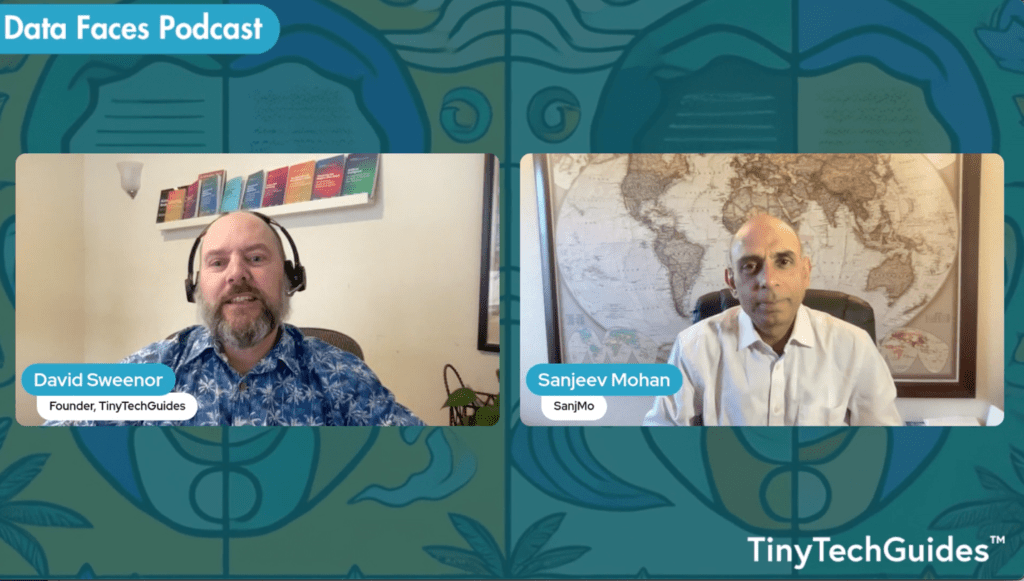
Understanding Generative AI Business Applications
When ChatGPT went mainstream about a year ago, it captured the world’s undivided attention. McKinsey estimates that generative AI may add up to four trillion dollars to the economy.[1] Generative AI has broken barriers and transformed how we think about what computers are truly capable of. No matter your role or skill level, everyone now has the potential to create text, code, images, audio, and video that is nearly indistinguishable from human-generated content. Using nothing more than an internet browser and your natural ability to ask questions, your creativity is no longer bounded by your innate skills. These questions, known as prompts, allow anyone to create prose, write code, compose songs, and generate art that the Old Masters would envy.
Unlike traditional AI, which deals primarily with numeric data and occasionally small amounts of text, generative AI refers to a category of AI systems capable of generating completely novel content on their own. Unlike most AI systems (sometimes called predictive AI), which focus on analyzing historical data and making future numeric predictions, generative AI allows computers to produce brand-new outputs that are often indistinguishable from human-generated content.
At the core of most generative AI systems are large language models (LLMs)—which are neural networks trained on massive volumes of data–most of which were vacuumed from the internet without regard for privacy and intellectual property (IP) rights. By learning the patterns and structures of human language, computer code, images, and music, LLMs can contextually understand concepts and generate new content, which shares statistical similarities with the original corpus it was trained on. When prompted with a few words or sentences, LLMs can produce paragraphs, stories, poems, functional code, synthetic data, photorealistic images, original music, and video.
Before business leaders can capitalize on generative AI, they need to understand the types of models and how they can be applied to business. Below, we will provide an overview of the six types of generative AI models, key vendors, and real-world examples of how they are applied.
Types of Generative AI Models
LLMs power various generative AI capabilities, including text, code, synthetic data, image, audio, and video models.
Text Models
LLMs like OpenAI’s GPT-4, Antropic’s Claude, Meta’s Llama 2, and Google’s PaLM 2 can generate amazingly human-like text content. They can write articles, emails, and reports, translate languages, summarize extensive collections of text documents, answer questions based on text within documents, and much more–simply based on text prompts.
For example, the popular AI writing assistant Jasper.ai has over fifty writing templates that span advertising copy, blogs, thought leadership, emails, product documentation, user guides, product reviews, social media posts, podcast and video scripts, press releases, search engine optimization (SEO), surveys, and much more. Marketing, sales, and product management teams use pretty heavily in their day-to-day activities.
For example:
- Financial services company JP Morgan Chase is in the process of developing IndexGPT, a ChatGPT-like application that aims to deliver personalized investment advice to its esteemed clients.[2] The primary objective of this innovative endeavor is to curate and recommend suitable financial securities to meet each client’s unique needs.
Code Models
LLMs trained in computer code like GitHub Copilot, Amazon CodeWhisperer, OpenAI Codex, and Replit can generate functional computer code in dozens of languages, including Python, JavaScript, HTML, and more.
These tools greatly enhance software developer productivity, offering features such as code autocomplete based on function descriptions, efficient debugging, API discovery, code documentation, test case creation, and code refactoring. A survey of 2000 GitHub software developers demonstrated that those utilizing a coding assistant reported higher task completion rates, improved efficiency, and a 55% faster completion time compared to those without such assistance.
For consultants:
- Accenture utilizes Amazon CodeWhisperer to accelerate coding in their Velocity platform, yielding significant gains in developer productivity and reducing developer efforts by 30%. Tata Consultancy Services (TCS) also uses CodeWhisperer for their Financial Spreading solution, resulting in 20% productivity gains per user and a 25% overall speed increase for deployments.[3]
Synthetic Data Models
The need for synthetic data continues to grow with the increasing number of data privacy regulations. In fact, the analyst firm Gartner predicts that by 2024, 60% of the data used for artificial intelligence (AI) and analytics projects will be synthetic.[4] Companies like Tonic, Mostly.ai, Parallel Domain, and MIT’s Synthetic Data Vault (recently renamed DataCebo) are working to simplify the generation and use of synthetic data. By using synthetic data, organizations can easily collaborate without fear of exposing sensitive or proprietary information by creating synthetic data sets for projects.
One of the primary uses of synthetic data is for security and data privacy regulations, but there are others. Data scientists use synthetic data for training AI and machine learning (ML) models. For instance, when developing ML models to identify anomalies in manufacturing equipment or detect fraudulent transactions, it is essential to consider that these events are inherently rare. However, by using synthetic data, data science teams can augment the original data set with artificially generated data, creating a more balanced distribution. This balanced data set facilitates improved model generalization, enhancing its effectiveness. Lastly, synthetic data is also used to train autonomous vehicles and generate 3D images of different people and products under different angles and lighting conditions for several computer vision applications.
For telecom:
- Data is crucial for customer satisfaction and staying ahead in the telecom industry. However, legacy anonymization methods destroy valuable information–especially with time series data. Telefónica, a Spanish multinational telecommunications company, created a synthetic version of their customer relationship management (CRM) system, which mimicked the original data. With this 100% GDPR-compliant copy of the data, they are now able to safely create ML models to better understand customer behavior, ultimately reducing churn and enhancing satisfaction.[5]
Image Models
Models like OpenAI’s DALL-E 3, Stability AI’s Stable Diffusion, and Midjourney can create photorealistic images and art based on simple text descriptions. They can create composite images, apply artistic styles, and render 3D models that can be used in fashion or product development.[6]
For example, a brand manager could prompt AI to generate a logo of a surfer on a wave, and it will create an original image. This brings visual creativity to anyone. Manufacturers and architects are using generative AI models to create rapid prototypes of products and 3D renderings of buildings.
For retailers:
- In retail and fashion, numerous companies are leveraging generative AI to enhance and simplify the shopping experience. In addition to using generative AI text models to personalize shopping experiences, various retailers, including Anthropologie, Everlane, H&M, and LOFT, have partnered with Google to use generative AI models so shoppers can virtually try on different clothing.[7]
Audio Models
Models like Meta’s Audiocraft, Beethoven.ai, and Murf.AI are examples of AI applications that can create realistic synthetic voices, clone human ones, and produce original, oftentimes royalty-free, music across diverse genres and styles. These models are capable of constructing melodies, harmonies, and instrumental arrangements. Users can personalize the length and instruments and fine-tune the mood, tempo, and other parameters.
AI music models can be used to create personalized ads, voiceovers, and jingles for marketing. They are used to develop eLearning content, more natural-sounding chatbots, demo videos, and soundtracks for gaming and entertainment. For my previous book, I used Google’s AI service to create an audio version of my book – I was able to select the type of voice (male or female), the speaker’s age, tempo, and a dizzying number of accents.
Business uses include:
- Xerox, a global document management company, used a product from Synthesia product to automate voiceoversfor their corporate learning and development (L&D) content. The software enabled them to generate voiceovers in multiple languages, resulting in a significant reduction of video production costs by 50% and a time savings of 30% per video.[8]
Video Models
Companies like Runway, D-ID, and Pictory create video-generation applications virtually anyone can use. These tools are used to edit existing videos, find compelling or exciting moments in the videos, or create entirely new video clips based on text prompts.
Media and entertainment companies can undoubtedly use these to augment their content creation process, individual content creators can use these tools to accelerate their productivity, and businesses can use them to enable more people in their companies to create and edit videos for how-to videos, explainer videos, short ads, and knowledge-base videos.
Within finance:
- Samsung used DeepBrain to create digital twins of their prominent analysts so they could make financial analysis videos for their investors daily.[9]
The applications of generative AI are endless. LLMs continuously improve at producing high-quality, human-like content autonomously across modalities like text, code, visuals, audio, and video. Now that we understand the types of models and example use cases, how can businesses supply the models and applications with their unique data? Check out my article, Generative AI’s Force Multiplier: Your Data.
If you enjoyed this article, please like the article, highlight interesting sections, and share comments. Consider following me on Medium and LinkedIn.
If you’re interested in this topic, consider TinyTechGuides’ latest report, The CIO’s Guide to Adopting Generative AI: Five Keys to Success or Artificial Intelligence: An Executive Guide to Make AI Work for Your Business.
[1] Mckinsey & Company. 2023. “Economic Potential of Generative AI | McKinsey.” Www.mckinsey.com. June 14, 2023. https://www.mckinsey.com/capabilities/mckinsey-digital/our-insights/the-economic-potential-of-generative-ai-the-next-productivity-frontier#introduction.
[2] Son, Hugh. 2023. “JPMorgan Is Developing a ChatGPT-like A.I. Service That Gives Investment Advice.” CNBC. May 25, 2023. https://www.cnbc.com/2023/05/25/jpmorgan-develops-ai-investment-advisor.html.
[3] “AI Code Generator – Amazon CodeWhisperer Testimonials – AWS.” n.d. Amazon Web Services, Inc. Accessed November 2, 2023. https://aws.amazon.com/codewhisperer/testimonials/.
[4] Castellanos, Sara. 2021. “Fake It to Make It: Companies Beef up AI Models with Synthetic Data.” Wall Street Journal, July 23, 2021, sec. WSJ Pro. https://www.wsj.com/articles/fake-it-to-make-it-companies-beef-up-ai-models-with-synthetic-data-11627032601.
[5] “Synthetic CRM Data for Analytics with Telefónica – MOSTLY AI.” n.d. MostlyAI. Accessed November 2, 2023. https://mostly.ai/case-study/synthetic-crm-data-for-analytics.
[6] Harreis, Holger, Theodora Koullias, Roger Roberts, and Kimberly Te. 2023. “Generative AI in Fashion | McKinsey.” Www.mckinsey.com. March 8, 2023. https://www.mckinsey.com/industries/retail/our-insights/generative-ai-unlocking-the-future-of-fashion.
[7] Rincon, Lilian . 2023. “Virtually Try on Clothes with a New AI Shopping Feature.” Google. June 14, 2023. https://blog.google/products/shopping/ai-virtual-try-on-google-shopping/.
[8] “How Xerox Cut Video Production Costs by 50%.” n.d. Www.synthesia.io. Accessed November 3, 2023. https://www.synthesia.io/case-studies/xerox.
[9] “DeepBrain AI – AI Avatar Banking & Financial Service.” n.d. Www.deepbrain.io. Accessed November 3, 2023. https://www.deepbrain.io/solutions/finance.



